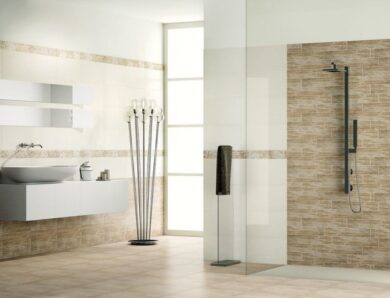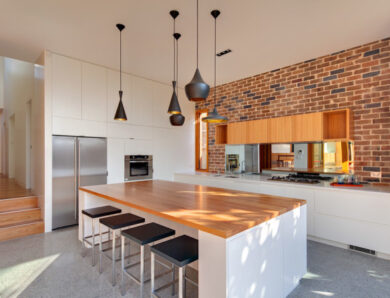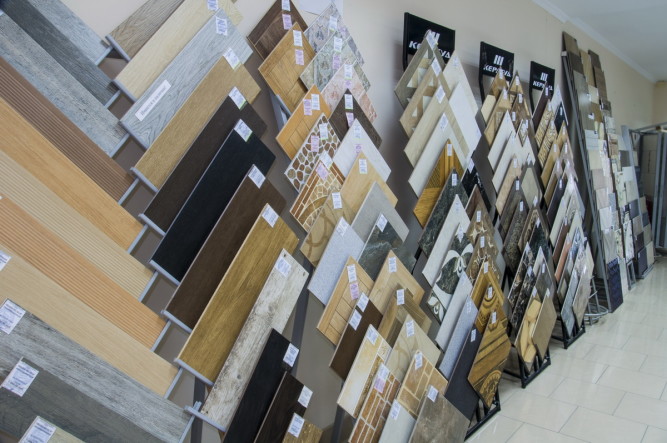Types of paving slabs: dimensions and requirements of GOST
A difficult task is the selection of paving slabs for landscaping. It is necessary to determine the appropriate size and a number of additional indicators. It is important to take into account the requirements of GOST, because only high-quality coverage will last a long time.
Today there are a huge number of types of street decoration on the market
material features
Paving slabs are a special category. It is mainly made of concrete. Regarding the composition, there are certain GOST. Example, cement, which is used in production, according to the standards should not be worse 300 stamps.
The finished product weighs a lot. This is due to the use of solid materials in the production, and the thickness of one element is on average from 3 to 8 cm. The specific weight of paving slabs depends on its size and density.
The required thickness depends on the expected load
Preferred characteristics in compliance with GOST standards, is:
- Strength. The tile can withstand enormous pressure and punctures. It is even used in parking lots and driveways.
- Durability. Easily withstands weathering, as well as abrasion. Constant contact with abrasive particles does not affect the quality of a truly high-quality coating. The same goes for ultraviolet and other factors.
- Heat resistance. Concrete is not afraid of heat. Samples with special additives are selected for street paths, not afraid of frost.
- Water resistance. Precipitation and other sources of moisture are not a threat to such coverage. Concrete partially absorbs liquid, but eventually dries completely.
production methods
To identify the most popular species, first find out the process of making this material. In addition, it allows you to find out the degree of compliance of technical parameters with GOST standards.
There are three main methods:
- Vibropressing. The work uses wet raw materials, which is laid in the matrix and under the influence of pressure is compressed to the desired shape and additionally vibrate.
- Vibrocasting. The dimensions of the future product are determined by the matrix, into which the concrete mix is poured. Then the filled form is placed on a vibrating platform for compaction.
- Hyperpressing. Semi-dry pressing method. Due to the reduction of humidity to a minimum and the formation of ultra-dense material. Better pavement coverage, than from such tile it is not necessary to look for. Note, that its thickness is less, than other elements.
Types of street tiles depending on the method of manufacture
Separately note the polymer sand products. An excellent alternative to standard samples. Thanks to additives, it has the parameters of wear resistance, exceeding GOST.
Examples of polymer sand coating material
Types by shape
Considering specifically the types of processing, standards are secondary here. The criterion of visual perception is taken as a basis, namely the shape of the product.
According to GOST distinguish the following basic types of raw materials:
- Pavement. Simulates masonry. Available in several versions, including "Old Town" and "Bridge".
- Clover. This is a kind of standard among the figured elements. It has rounded "petals" on the edges of the product. Often combined with Gzhelka.
- Brick. Normal rectangular shape, which is used in paving.
- Coil. Differs in configuration, similar to a skein of thread, that is, it narrows to the middle.
- Turtle. Usually a square tile with a pattern on the surface, imitating a turtle shell. Individual fragments of the pattern are completely different broken shape and size.
- Well. Simulates masonry with radial discrepancy of small details.
- Florida. The elements contain a picture, consisting of joyful smooth and embossed lines. Four squares form an equal circle.
- California. Figure, consisting of 4 rectangular bricks at the edges and one square in the center.
- Checkers. Relief is applied to the square element, which consists of small recesses and protrusions. The lines are arranged vertically, and horizontally, grouping into elements, placed in a checkerboard pattern.
- Square. Ordinary smooth square tiles.
- Four. The material is conditionally divided into 4 parts, the sizes of which are the same, and arbitrary.
- Eight. It consists of eight rectangular bricks, connected in a square detail.
Some types of paving slabs
It is difficult to say how many types of cladding there are. Manufacturers offer samples of unique design with their own parameters. This is a great alternative to standard paving tiles.
available sizes
For each type the dimensions according to GOST are established. It is important to follow the parameters, as during installation of a covering exact joining of fragments is achieved. This applies as a standard calculation, and options for creating complex schemes and drawings.
The following element sizes are distinguished for basic models:
- clover: 295х295 mm;
- brick: 100х200 mm;
- coil: 200х168 mm;
- turtle: 300х300 mm;
- well: 300х300 mm;
- Florida: 300 X 300 mm;
- California: 300 X 300 mm;
- checkers: 300х300 mm;
- square: 500 X 500 mm;
- four: 300х300 mm;
- eight: 400h400 mm;
- the old Town: 120x90 mm, 120х120 mm, 120х180 mm;
- pavement: 140h70 mm, 140h140 mm, 210 h140 mm.
exept this, the sizes of different types differ also in thickness. For pedestrian sidewalks with low load and paths enough three-inch tiles. If the load on the coating is more intense, then pay attention to the model in 5 cm. For recreation areas take no less 5-6 cm, and here are paving slabs, intended for the construction of an access road or car parking space, maximum values are used.
According to GOST, standard samples of products of different thickness are the following categories of tiles, as:
- 3 cm - clover, California, well, Florida, turtle, four, checkers;
- 5 cm - eight;
- 6 see - the old town, brick;
- 7 cm - square;
- 8 cm - coil, brick, pavement.
There are samples with a thickness of 2 cm and reinforced models to 10 cm.
Alternative coatings
It is not easy to choose street tiles for the design of the adjacent territory. To this end, correlate the price and design of the material, parameters and technical features of individual samples, method of their manufacture and more.
Comparative characteristics of the main species
exept this, there is an alternative to paving slabs.
Consider, what types of coatings replace it. Such materials are more often used in the arrangement of street platforms and paths:
- Concrete. The area is filled with mortar and leveled. In the future, some areas are additionally lined with porcelain or clinker.
- Asphalt concrete. This coating is perfect for arranging places for traffic and parking. The mixture of asphalt and concrete is strong and in the case of proper laying lasts for years.
The device of sidewalks by an alternative method
Such a coating has a less decorative appearance. At the same time, sometimes these materials are inferior in quality. Example, concrete eventually cracks and crumbles, because the load on it leads to the expansion and displacement of the layer. When using tiles, this disadvantage is eliminated. And asphalt when heated emits harmful substances.
There is also an alternative to concrete tiles. Rubber and plastic blocks are used in the arrangement of the site. In the first case we are talking about the material, created from crumbs of old car tires. Due to the strength and cushioning of this coating is ideal for areas with heavy loads. At the same time its thickness is less, than in concrete products. And plastic tiles are made in the form of solid panels or lattice blocks. They are installed in the garden or recreation area. Such models are less durable, but ensure the outflow of water.
Street tiles made of crumb rubber
Choosing the best pavement material is a subjective matter. In this case, be sure to take into account the recommendations of GOST standards and control the origin of raw materials, used in the production of material.



